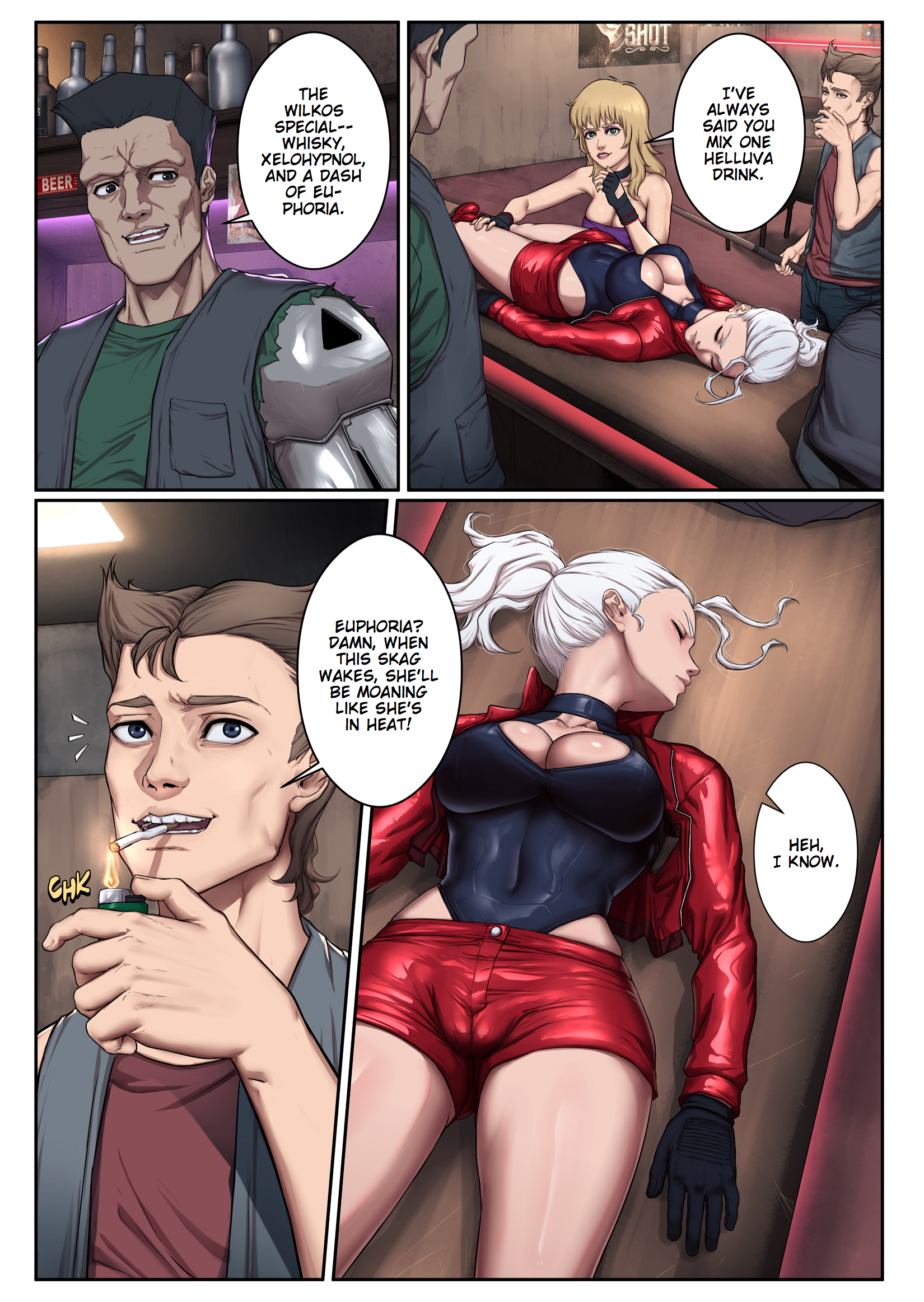Chapter 22, Page 30
The following is an excerpt from Addiction & Prevention Journal, a bi-monthly publication dedicated to exploring the habits that lead to drug addiction and their prevention. [Article originally published one month ago.]
THE EUPHORIA CRISIS
Aptly named, Euphoria is a highly-addictive drug that gives its user intense feelings of pleasure, greatly heightening one’s sense of arousal, carnal desires, and the urge to act on sexual impulses.
Euphoria is considered a “white-collar” illegal substance, due to its high cost. Taken in liquid form, Euphoria affects the brain’s ventral tegmental area—the so-called “pleasure center” and results in a euphoric high that can last between two to six hours, based on the average dosage. During early interactions with the drug, numerous users have cited that they found themselves completely overtaken by sensations of lust and an “uncontrollable” drive to have sex or masturbate. Over time, users who take Euphoria on a frequent basis generally have more control over themselves.
Even during long-term usage, and despite some users developing a tolerance to the substance, the intensity of sexual pleasure while taking Euphoria remains significantly high.
In certain individuals, side-effects of Euphoria use may include convulsions, seizures, heart attack and/or stroke. Prolonged usage could lead to paranoia, mental instability, and aberrant behavior, including violence, sexual frenzy, and/or death.
Among pleasure drugs, Euphoria is widely considered to be one of the most potent, addictive, and potentially dangerous. The substance has been banned in nearly every country.
Danger Zone One. Story by Midnight. Art by Salaiix.






















It’d be pretty insane if she just starts having a seizure instead. :p
haha yeah fr
I do believe they may be in for a surprise…
Yeah, Madison has no sex drive.
On another subject, that’s quite a pronounced camel toe she’s showing in the final panel.
Why do I get the feeling that we’re about to see some VERY HOT ACTION from Madison soon?😏😎
We probably all live in the hope that you are correct!
🙂
I really hope we get to see Madison strip down and go crazy, would be refreshing since she’s usually always relatively calm and in control
It seems more likely that she’d be one of the people it gives seizures to 🙄
Depends on what Madi finds pleasure in (or from), these walking bodybag-inserts won’t like finding out